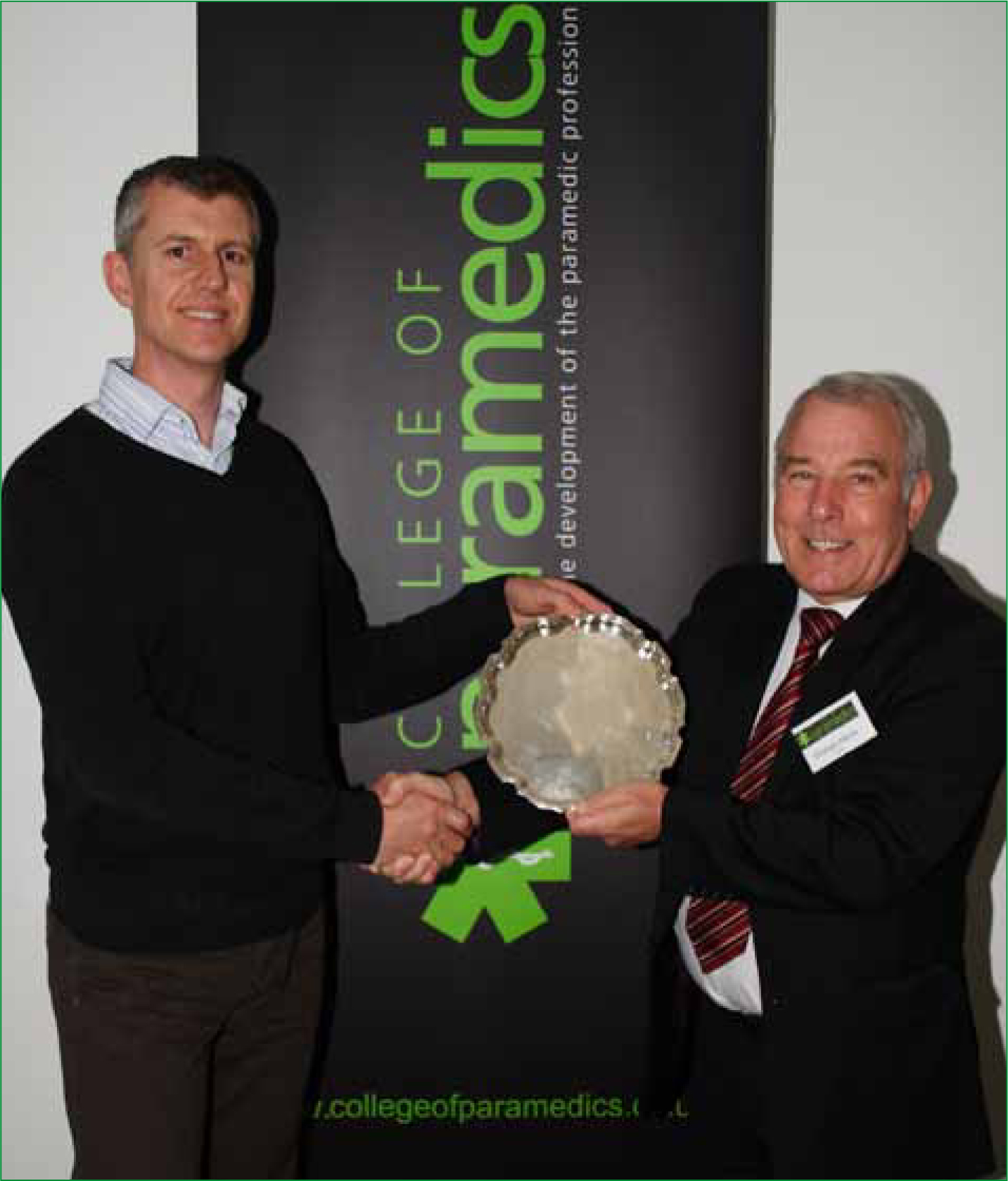On a day when outdoor temperatures reached 30 °C, the ambulance service responded to a 19-year-old male who had collapsed in the late afternoon. His first day of employment for a local building company had been spent working outside on the roof of a residential property. He had applied sun cream and hydrated often. His work colleagues were emphatic that he’d been well all day but within 10 minutes he had become disorientated, vomited and collapsed.
An ambulance crew and paramedic single responder arrived 10 minutes after the 999 call was made. The patient was found collapsed on the driveway and a work colleague was holding an electric fan over him. Primary survey revealed a partially occluded airway from neck flexion and vomit, tachypnoea and a weak radial pulse at 170. The patient had no motor response and remained flaccid. Additionally he felt hot.
Initial management involved a head tilt, mechanical suction, oral pharyngeal airway, high concentration oxygen and the removal of the patient’s clothing. He was placed on a stretcher and removed to the air-conditioned ambulance. An IV was placed and monitoring attached. Further observations were noted: SP02 90 %, blood pressure BP 96/79, narrow complex tachycardia (Lead II), tympanic temperature above 42.2 °C and BM 9.7 mmols.
Ensuing bradypnoea then subsequent apnoea was addressed with bag valve mask (BVM) ventilations but the face seal became problematic. A laryngeal mask airway (LMA) was quickly sited with ETCO2 of 55 mmHg. At this point right pupillary dilation was noted.
A pre-alert to the local district general hospital emergency department was placed but after five minutes the patient’s narrow complex tachycardia widened and became bradycardic. Within one minute he suffered a pulseless electrical ativity (PEA) cardiac arrest. Large volumes of watery haematemesis began to bypass the laryngeal mask airway (LMA) airway and a decision was made to intubate. ETCO2 remained high and with full advanced life support (ALS) underway the journey to an emergency department was recommenced.
The patient received an hour of resuscitation at the ED before life was pronounced extinct. The post mortem report gave the cause of death as multiple organ failure following hyperpyrexia. HM Coroner stated that there was no organic reason for death and no evidence of drugs. Essentially the patient had an extreme elevation in body temperature, most likely caused by working outside in the heat.
Heat related mortality is rare in the UK with an estimate of 40 cases per million (Willacy, 2010). Factors contributing to dangerous elevations in body temperature include high external temperatures, humidity, physical exertion, age, drug and alcohol intake and other existing medical conditions (JRCALC, 2006; Caroline, 2008; Helman, 2009; Willacy, 2010; NHS Choices, 2011). There is a significant quantity of literature covering the continuum of heat illness up to heat stroke Joint Royal Colleges Ambulance Liaison Committee (JRCALC), 2006; Caroline, 2008; Willacy, 2010) where the degree of hyperthermia depresses the hypothalamus and a vicious positive feedback mechanism exists between rising temperatures and increasing metabolic rate (Marieb, 1992). Heat stroke is defined as body temperature above 40–41 °C combined with an altered mental state (JRCALC, 2006; Caroline, 2008; Helman, 2009; Panté and Pollak, 2010).
Classic heat stroke is seen in the context of high environmental temperatures eliciting a response in the elderly, the young, those with chronic illnesses or alcoholism (JRCALC, 2006; Caroline, 2008). The progression of this illness is more protracted over several days (Panté and Pollak, 2010). However, exertional heat stroke is characterised by strenuous activity undertaken by young, ft, healthy individuals in hot and humid conditions. Its onset is more sudden and rapid, described as over hours (Panté and Pollak, 2010). Although little literature exists concerning speed of onset of symptoms and death, body temperature can rise from normal to 41 °C within 15 minutes (Caroline, 2008) making management extremely difficult. Clinically patients may present with hot dry skin, headache, confusion, ataxia, vomiting and diarrhoea, cramps, tachycardia, tachypnoea and decreased consciousness (JRCALC, 2006; Caroline, 2008; Panté and Pollak, 2010). Further instrumental observations may reveal hypotension and hypercapnia (Panté and Pollak, 2010).
For UK paramedic’s, pre-hospital treatment options include airway management, high concentration oxygenation, removal of clothing and the patient to a cool environment and replacement of fluids orally, or IV—titrated to regain absent radial pulses (JRCALC, 2006). The Joint Royal Colleges Ambulance Liaison Committee advocates approaches to cooling including fanning, tepid sponging and soaked sheets. However, it guides against using cold water due to heat retention secondary to vasoconstriction (JRCALC, 2006). Other literature describes the need for aggressive cooling measures including ice packs (Helman, 2009; Panté M, 2010; Willacy, 2010). In this case study ambulance attendees found that on-going airway management requirements and the rapid progression to respiratory and then cardiac arrest focused their attention away from other cooling methods.
This case highlights how rapid and fatal exertional heat stroke can become despite precautions having been taken by the patient. Although it is unlikely that ambulance crews or emergency department practitioners would encounter such an aggressive presentation, knowledge of early signs and symptoms could prevent fatal deterioration.

